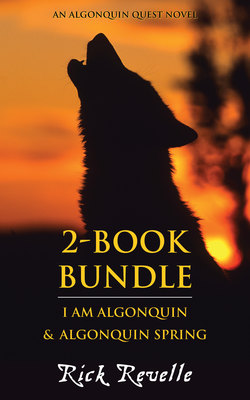Читать книгу Algonquin Quest 2-Book Bundle - Rick Revelle - Страница 4
На сайте Литреса книга снята с продажи.
Author’s Note
ОглавлениеSome time ago a person asked me how long I’ve been an Indian. My answer was since the day I was born.
Out of ignorance and lack of information a lot of people have no idea about who we are as Natives.
We cannot be lumped into one linguistic or cultural group. We have been and still are a collection of Nations in a Nation called Turtle Island.
We weren’t discovered; we were here long before anyone thought of looking.
European people said that they were created in Europe, but when we say that we were created on Turtle Island, they point out “oh no, you crossed the Bering Strait.” (Quoted from Dan the Lakota Elder in Neither Wolf Nor Dog by Kent Nerburn.) What right do they have telling us this?
Ever since I was a young boy I had a story in my head waiting to get out. I knew very little about my ancestors. What I did know was that my Great, Great, Great Grandfather Oliver Cota in the 1840s brought his family from the Petite Nations, an Algonquin reserve in Quebec, and built a log cabin in Bedford Township north of Kingston, Ontario. The cabin still stands to this day.
However, what of before — before the Europeans stumbled across Turtle Island? Who were we, how did we survive and live in this land?
The story you are about to read is a book of fiction, but it is as historically accurate as possible. It is the story of the Omàmiwinini (Algonquin People) in the early 1300s and how they lived.
There is very little written about the Algonquins and artifacts are few and far between. I travelled from Thunder Bay to Newfoundland and points in between to do my research. The Internet proved to be an immense help, but again there is very little information written about my ancestral Nation. What exists is informative and historically important. As difficult as it was to gather information, I gleaned bits and pieces from many sources and interwove it into my story. Museums in Thunder Bay, Midland, Ottawa, Quebec City, and St. John’s, Newfoundland, helped to give me the insight I needed. These museums were able to aid me with small tidbits of information about my people that I was able to use. Again the recurring theme repeated itself, very little information about the Algonquins. In the two years of writing my story, I read twelve books that were able to shed some light on my people, how they lived, warred, and interacted with themselves, their allies, and enemies. None of these books, though, were a definitive story of my people.
My most important acquisition was an Algonquin dictionary for which I am deeply indebted to David Bate of the Ardoch Algonquin First Nation and Allies for finding and relaying this important document. This document is called Algonquin Lexicon by Ernest McGregor for the Kitigan Zibi Education Council.
In the end, my research was a long, drawn-out affair that came together like a jigsaw puzzle.
As you read this novel the two hopes that I have are that you learn something that you didn’t know about the Algonquins and their Allies, and that it will help in a small way to bring attention to the Algonquin language.
I want to give special thanks to Max Finklestein for his knowledge of canoeing the Ottawa River watershed. All of my friends at the Colonnade Golf and Country Club, Marie from Queens University, Jim Corrigan, Frank Gommer, and the twins Lauren and Adrie for my character foundations. My new friends at the Glen Lawrence Golf Club for giving me even more future personalities to work with. Larry and Yvonne Porter for believing. My Mohawk golfing buddy and true friend, Ed Maracle. My sisters Vicki Babcock and Cindy Vorstenbosch for their constructive criticisms. My wife Muriel for all her help. My final thanks to my wonderful friend who meticulously edited my book, Janette St Brock.
This book was made possible through a grant from the Canada Arts Council Aboriginal Emerging Writers Program.
